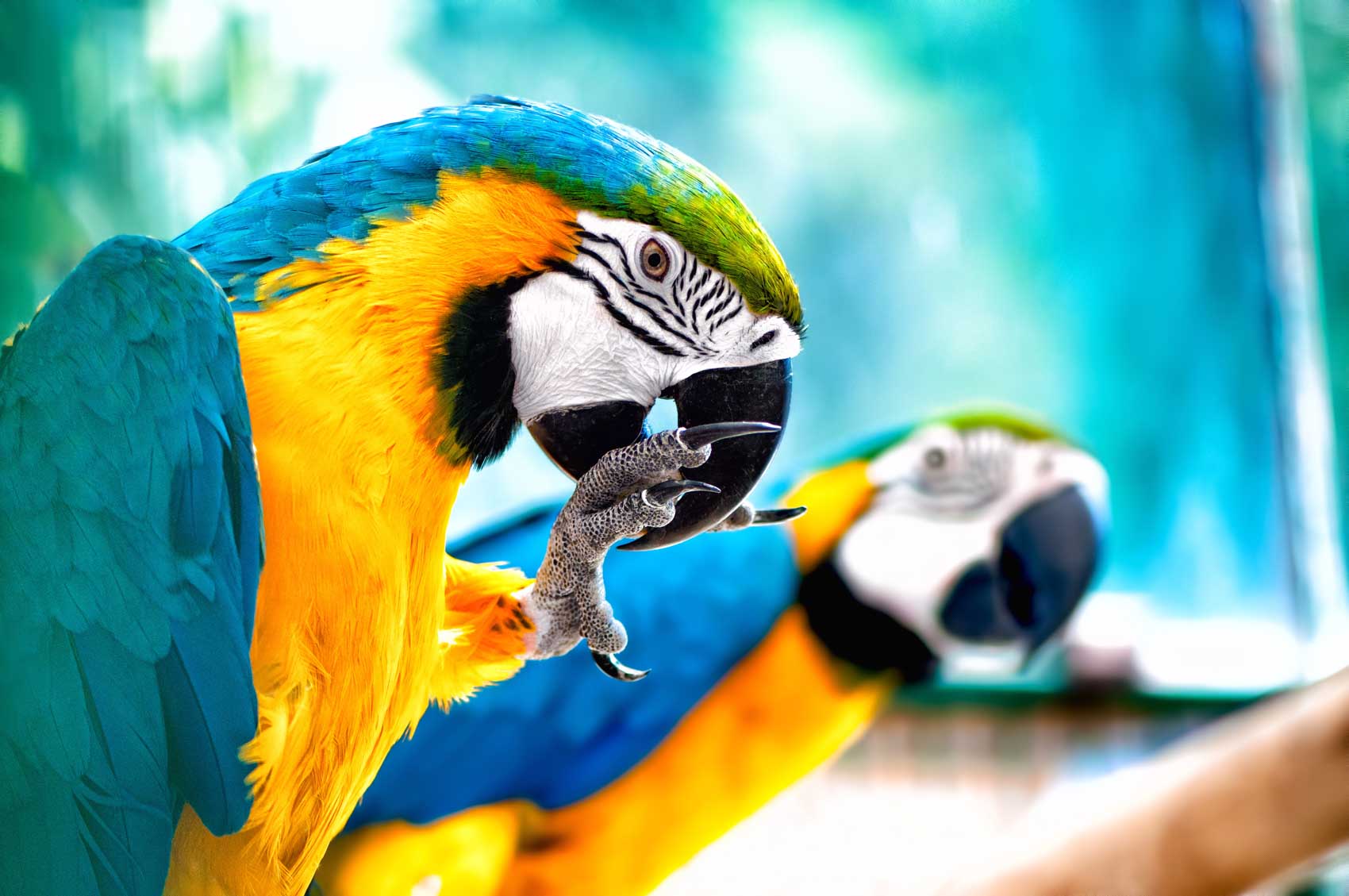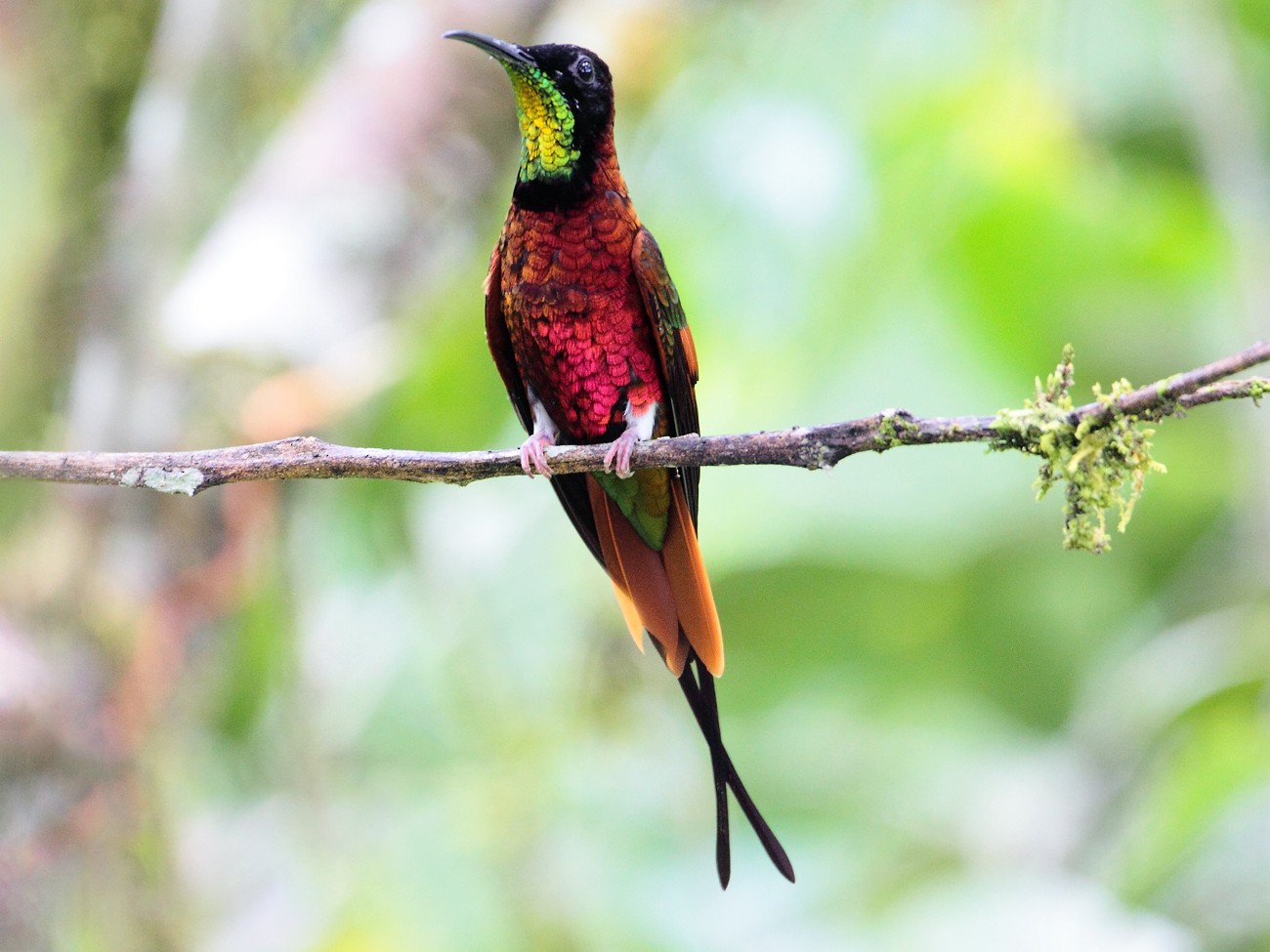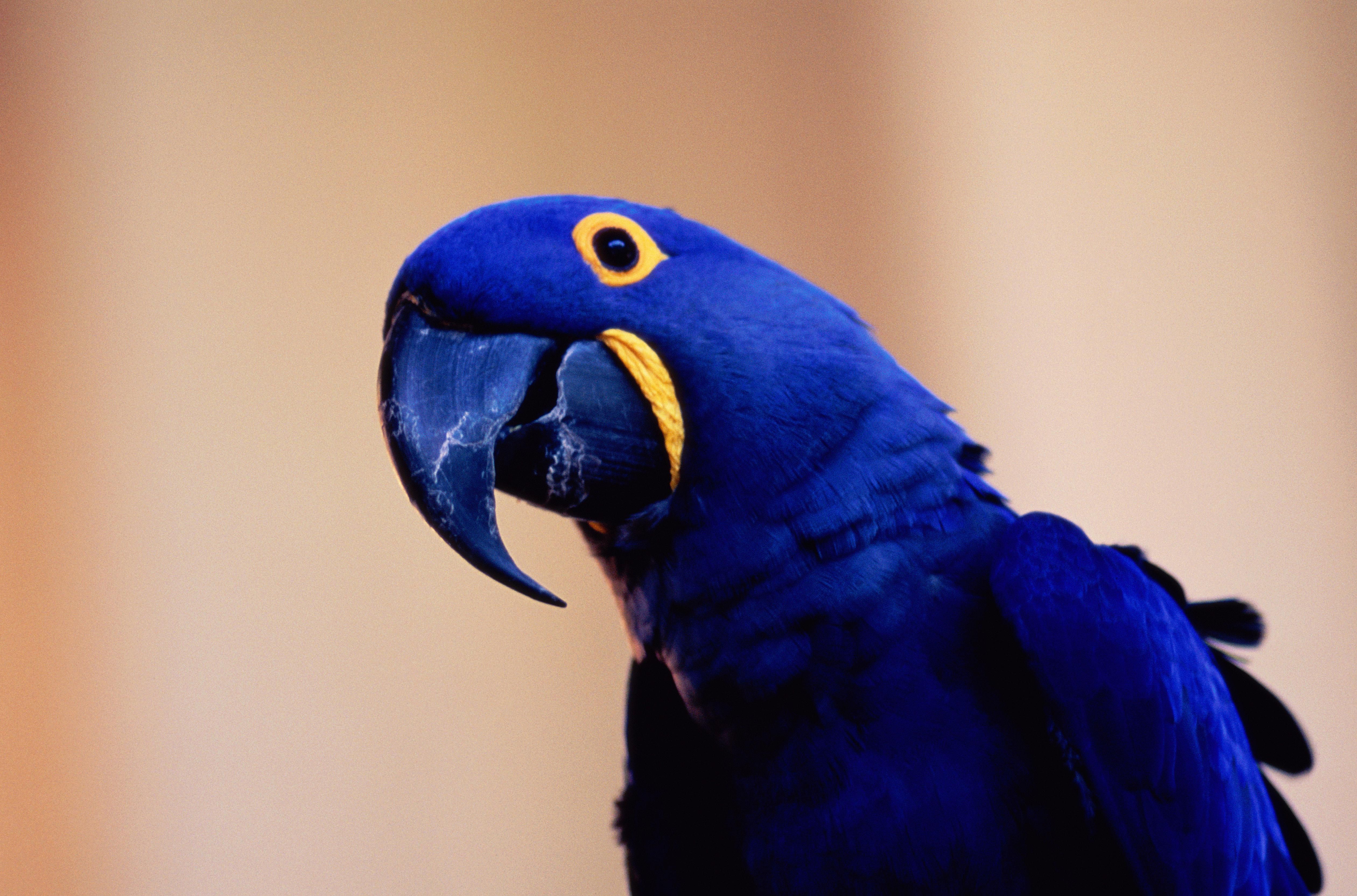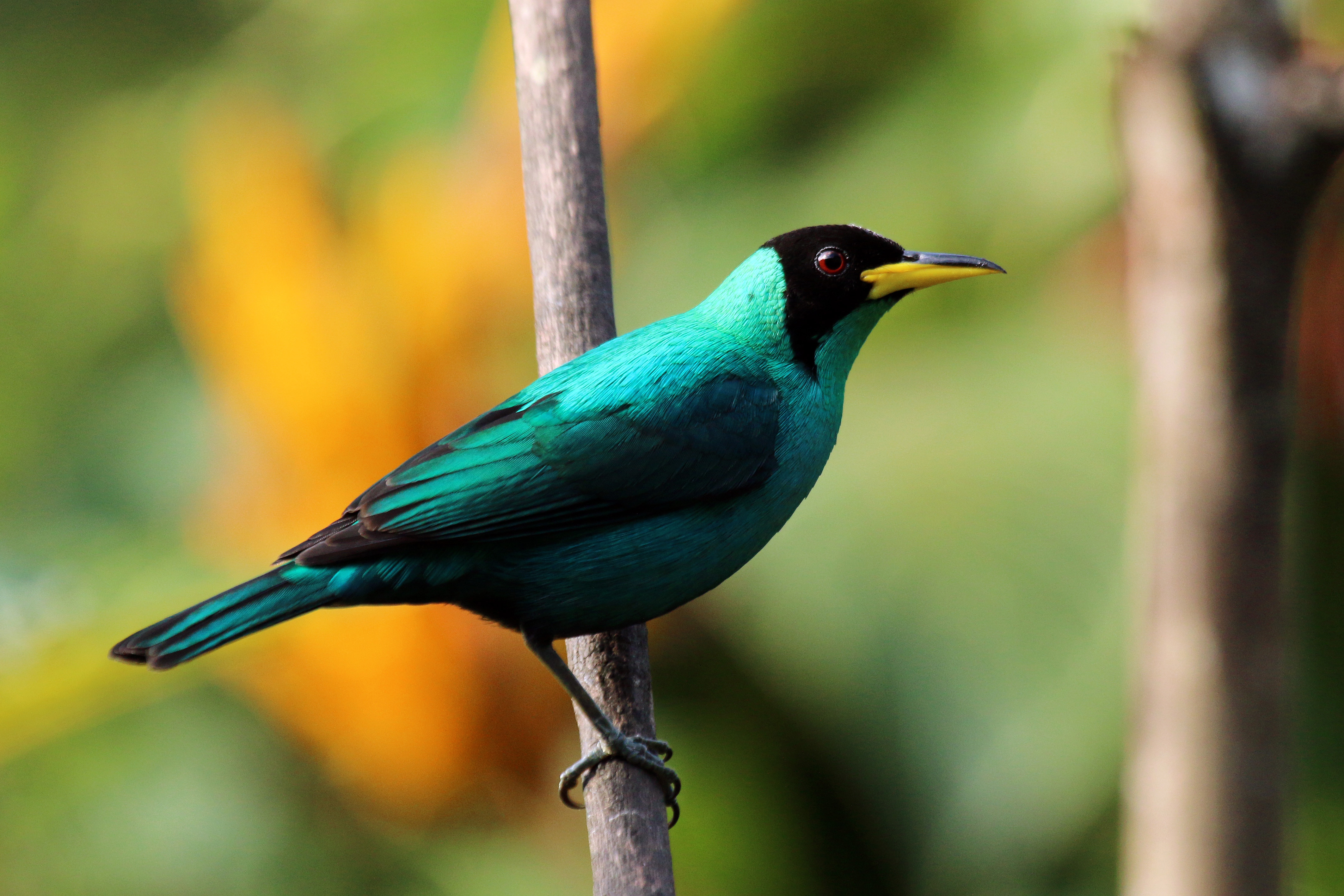Rainforests are some of the oldest living ecosystems on Earth, and they are home to a diverse range of creatures, including many unique and colorful birds.
These birds have adapted to the moisture-dependent vegetation of the rainforest and display a wide range of colors and patterns. From the striking plumage of the Scarlet Macaw to the vibrant feathers of the Toco Toucan, rainforest birds are a sight to behold.
You are reading: 10 Colorful Types Of Rainforest Birds
In this article, we will explore 10 colorful types of rainforest birds, including their locations, appearance, diet, vocalizations, and behavior.

10 Colorful Types Of Rainforest Birds
Scarlet Macaw

The Scarlet Macaw (Ara macao) is a large, brightly colored Neotropical parrot native to the humid evergreen forests of the Americas. Its range extends from southeastern Mexico to Peru, Ecuador, Colombia, Bolivia, Venezuela, and Brazil in lowlands of 500 m (1,600 ft) up to 1,000 m (3,300 ft), the Caribbean island of Trinidad, as well as the Pacific island of Coiba.
Scarlet macaws are monogamous birds, with individuals remaining with one partner throughout their lives. The hen lays two or three white eggs in a large tree cavity. The female incubates the eggs for about five weeks, and the chicks fledge from the nest about 90 days after hatching and leave their parents about a year later.
Scarlet macaws are intelligent and energetic birds, and they are capable of escaping from their enclosures. They are also known for their sassy personality and are popular among bird fanciers and novices alike.
Scarlet macaws are seed predators of large tree fruits in the ecosystems in which they live and may influence the generation of forest tree species.
Toco Toucan
The Toco Toucan (Ramphastos toco) is the largest and most well-known species in the toucan family. These birds are found in semi-open habitats throughout a large part of central and eastern South America, including northern and eastern Bolivia, extreme southeastern Peru, northern Argentina, eastern and central Paraguay, and eastern and southern Brazil.
Toco toucans have a striking appearance, with a mainly black body, a white throat, chest, and uppertail-coverts, and red undertail-coverts. They also have a large, colorful bill that is orange with a black tip and base.
The bill is lightweight and made of keratin, the same protein that makes up fingernails and horn, and is supported by thin rods of bone. The exact purpose of the bill is not clear, but it is believed to play a role in the courtship ritual and in self-defense.
Toco toucans are omnivores and feed mainly on fruits, but will also eat berries, nuts, insects, frogs, small reptiles, small birds, and their eggs and nestlings. They are typically seen in pairs or small groups and are known for their ability to regulate the flow of blood to their bills, which allows them to use it as a way to distribute heat away from their bodies.
Read more : 10 Types Of Migrating Birds
Toco toucans are non-forest birds and can be found in a wide range of semi-open habitats such as woodland, savanna, and other open habitats with scattered trees, plantations, forest edges, and even wooded gardens.
Crimson Topaz

The Crimson Topaz (Topaza pella) is a species of hummingbird in the family Trochilidae. Here are some interesting facts about the Crimson Topaz:
– The Crimson Topaz is the largest hummingbird in Brazil.
– The male Crimson Topaz has a velvety black head, iridescent crimson to gold back, and bright red underparts. Its wings are brown, and its tail feathers are bronzy green and chestnut.
– The female Crimson Topaz has a dark green head and back, lighter green underparts with golden green inclusions, and a green throat with crimson inclusions. Its tail feathers are bronzy, violet, and chestnut, and none are elongated like the male’s.
– The Crimson Topaz is found in Brazil, French Guiana, Guyana, Suriname, and Venezuela.
– The Crimson Topaz has four subspecies that differ in plumage colors.
– The Crimson Topaz feeds on nectar from flowers and insects.
– The breeding season of the Crimson Topaz varies across its range.
– The Crimson Topaz is sometimes kept as a pet, but it is illegal to capture or trade them in many countries.
Overall, the Crimson Topaz is a beautiful and fascinating bird that is found in the rainforests of South America.
Hyacinth Macaw

The Hyacinth Macaw (Anodorhynchus hyacinthinus) is the largest macaw and the largest flying parrot species in the world, measuring up to one meter in length from the top of its head to the tip of its long pointed tail. Here are some interesting facts about the Hyacinth Macaw:
Appearance:
– Hyacinth macaws have impressive cobalt blue feathers, which contrast with their bare yellow eye ring and the yellow patch of skin beside the lower bill. Their irises are dark-brown in color, and their feet are dark gray.
– Females and males are nearly indistinguishable, but the females are typically a little more slender. On juveniles, the upper bill is paler, and the tail is shorter.
Distribution and habitat:
– Hyacinth macaws are native to central and eastern South America and now inhabit only three distinct areas: the Pantanal, a natural region of Brazil, Bolivia, and Paraguay; The Cerrado, a tropical savanna ecoregion of Brazil; the eastern Amazon Basin of Brazil.
– Hyacinth macaws are found in palm swamps, woodlands, and other semi-open, wooded habitats. They usually avoid dense, humid forests and often inhabit savannah grasslands, dry thorn forests known as ‘caatinga’, and palm stands.
Behavior:
– Hyacinth macaws are very social birds and can be seen alone but usually form groups of up to four birds. They are also often found in bigger groups of between 12 and 20 birds, which often include pairs and family trios (parents and chick).
– They feed mainly during the morning and the late afternoon and are sometimes active on moonlit nights. During the heat of the day, they rest in the shade.
– Hyacinth macaws are seed predators of large tree fruits in the ecosystems in which they live and may influence the generation of forest tree species.
Care:
– Hyacinth macaws are the largest parrots and require a lot of space, attention, and care. They need a large cage, plenty of toys, and a varied diet that includes fresh fruits, vegetables, and nuts.
– They are intelligent and social birds and require daily interaction with their owners to prevent boredom and behavioral problems.
– Hyacinth macaws can become neurotic or phobic, which is problematic, possibly due to genetic factors or captive rearing limitations.
Overall, the Hyacinth Macaw is a beautiful and fascinating bird that requires a lot of care and attention. It is an important seed predator in the ecosystems in which it lives and plays a vital role in dispersing seeds, helping its ecosystem flourish.
Spectacled Owl
The Spectacled Owl (Pulsatrix perspicillata) is a large tropical owl that is native to the neotropics. Here are some interesting facts about the Spectacled Owl:
Appearance:
– The Spectacled Owl is a large owl with a chocolate-brown plumage on its upper parts and off-white or light yellow plumage on its breast. It has a thin white stripe around the throat with a thick dark brown stripe below. It is characterized by white “spectacles” around its bright yellow eyes.
– Juveniles are mostly white with a brown/black facial disk.
Distribution and habitat:
– The Spectacled Owl is a resident breeder in forests from southern Mexico and Trinidad, through Central America, south to southern Brazil, Paraguay, and northwestern Argentina. There are six subspecies.
– Spectacled owls occupy large home ranges, or territories, in mature tropical forest from Mexico to Bolivia and Brazil. Pairs may forage over an area of 50–200 hectares (125–495 acres) or more, searching for small rodents, sleeping birds, or reptiles. Most hunting is done from a perch in the understory layer of the forest, where the owl may remain for several days and nights. Nests are placed in a large tree cavity, which is often formed when the top of a tree snaps off during a severe windstorm.
Behavior:
– The Spectacled Owl is generally nocturnal, with activity normally beginning after dusk and continuing to dawn. It roosts singly by day in trees with dense foliage and is most vocal on calm, moonlit nights.
– Its voice is a low-pitched rhythmic series of accelerating hoots. Adults and young also emit a single catlike cry.
– Spectacled Owls eat small mammals including mice and the occasional possum or skunk, insects, spiders, many Caterpillars, bats, birds up to the size of Jays, crabs, and frogs.
Breeding:
– Spectacled Owls nest in tree hollows and lay 1-2 eggs, which are incubated by the female for about 5 weeks. Chicks leave the nest for surrounding branches at about 5-6 weeks, well before they can fly, but depend on their parents for up to a year once fledged.
Overall, the Spectacled Owl is a fascinating bird that is found in the tropical forests of the Americas. It is known for its distinctive “spectacles” and its low-pitched rhythmic series of accelerating hoots.
Blue and Yellow Macaw
The Blue and Yellow Macaw (Ara ararauna), also known as the Blue and Gold Macaw, is a large South American parrot with a mostly blue dorsum, light yellow/orange venter, and gradient hues of green on top of its head. Here are some interesting facts about the Blue and Yellow Macaw:
Appearance:
– Blue and Yellow Macaws are vibrantly colored, with blue on their backs and wings, yellow underparts, green forehead feathers, and green tips on the end of their wings. Their under-wing coverts and breast are yellow-orange, and they have black beaks, throat, and legs. Their eyes are yellow, and their facial area consists of bare white skin with several black feather lines around their eyes.
– They are one of the largest macaws, measuring up to 85 cm (33 in) in length and weighing up to 1.5 kg (3.3 lb).
Distribution and habitat:
– Blue and Yellow Macaws are found in lowland rainforests and savannas from eastern Panama to Brazil, often in more open habitats than other macaws. They are mainly found in pairs but can congregate in groups to form flocks.
– They are native to subtropical and tropical forests, woodlands, and savannas in South America from Venezuela to Brazil, Bolivia, Colombia, and Paraguay.
Behavior:
– Blue and Yellow Macaws are active during the day and are extremely wary, flying into the air screeching loudly at any sign of danger. They are seed predators of large tree fruits in the ecosystems in which they live and may influence the generation of forest tree species.
– They form monogamous pairs that mate for life and breed every year or second year. Nests are made high up in trees, usually in holes made by other animals. Two to three eggs are laid and are incubated for 24 to 28 days. The young leave the nest about 90 days after hatching.
Care:
– Blue and Yellow Macaws are popular as pets because they are beautiful, behaviorally complex, and intelligent birds. They require a lot of space, attention, and care. They need a large cage, plenty of toys, and a varied diet that includes fresh fruits, vegetables, and nuts.
– They are intelligent and social birds and require daily interaction with their owners to prevent boredom and behavioral problems.
– It is illegal to capture or trade Blue and Yellow Macaws in many countries.
Overall, the Blue and Yellow Macaw is a beautiful and fascinating bird that requires a lot of care and attention. It is an important seed predator in the ecosystems in which it lives and plays a vital role in dispersing seeds, helping its ecosystem flourish.
Harpy Eagle
The Harpy Eagle (Harpia harpyja) is a neotropical species of eagle and is the largest and most powerful raptor found throughout its range, and among the largest extant species of eagles in the world. Here are some interesting facts about the Harpy Eagle:
Appearance:
– Harpy Eagles have slate-black feathers on their upper parts, and their underside is mostly white, except for the feathered tarsi, which are striped black. They have a broad black band across the upper breast that separates the gray head from the white belly. The head is pale grey and is crowned with a double crest. The upperside of the tail is black with three gray bands, while the underside of it is black with three white bands.
– They are the largest species of eagle, with a body length that can range from 89 to 102 cm and a wingspan of 2 m. Females are normally larger, with an average weight of 7 to 9 kg, while males weigh an average of 5 to 8 kg. Their talons can be up to 12.5 cm long.
Distribution and habitat:
– Harpy Eagles are found in tropical lowland rainforests in the upper (emergent) canopy layer from southern Mexico to Brazil, Paraguay, and northwestern Argentina. They are most often found in pairs and form monogamous pairs that mate for life. They are solitary hunters that use their keen sense of sight to locate arboreal prey in thick rainforests.
– They require territories of about 30 square km for adequate hunting and are very territorial, driving out any competing individuals.
Behavior:
– Harpy Eagles are diurnal and hunt during the day. They are incredibly skilled in flight and are adept at maneuvering through their dense, forest habitat. They can potentially perch for up to 23 hours in search of prey.
– They are apex predators of their rainforest ecosystems and aid in keeping prey populations in check. They have an important role in controlling mesopredators such as capuchin monkeys (Cebus), which often prey on bird eggs.
– Harpy Eagles are seed predators of large tree fruits in the ecosystems in which they live and may influence the generation of forest tree species.
Diet:
– Harpy Eagles are skilled at catching arboreal animals, or animals that spend all or much of their lives in trees. This can include iguanas, parrots, porcupines, coatimundis, and raccoons. They have even been seen preying on Black Vultures and foxes.
– As top predators in their food chain, Harpy Eagles feed on sloths, opossums, and monkeys. They are a silent predator that glides across the forest like a stealth drone, despite their wingspan reaching up to 6.5 feet (2 meters). They won’t fly long distances to conserve energy and strength to catch and lift small animals weighing 17 pounds.
Conservation:
– Harpy Eagles are considered near threatened due to habitat loss and hunting. They are protected by law in most countries, and conservation efforts are underway to protect their habitat and increase their numbers.
Overall, the Harpy Eagle is a fascinating bird that is found in the rainforests of the Americas. It is known for its impressive size, powerful talons, and its role as an apex predator in its ecosystem.
Green Honeycreeper

Read more : Will Birds Eat Grass Seed
The Green Honeycreeper (Chlorophanes spiza) is a small bird in the tanager family that is found in the tropical New World from southern Mexico south to Brazil, and on Trinidad. Here are some interesting facts about the Green Honeycreeper:
Appearance:
– The Green Honeycreeper is a small bird that is 13–14 cm (5.1–5.5 in) long and weighs 14 to 23 grams (0.49 to 0.81 oz), averaging about 19 grams (0.67 oz). It has a long decurved bill.
– The male Green Honeycreeper is mainly blue-tinged green with a black head and a mostly bright yellow bill. The female Green Honeycreeper is grass-green, paler on the throat, and lacks the male’s iridescence and black head. Immatures are plumaged similar to females.
Distribution and habitat:
– Green Honeycreepers are found in humid evergreen forest edges, plantations, and gardens, at times with mixed-species.
– They are forest canopy species and build small cup nests in trees.
Behavior:
– Green Honeycreepers are called Green Honeycreepers because the females and young birds are bright green with red eyes.
– They feed on nectar, fruit, and insects.
– The call of the Green Honeycreeper is a sharp chip.
Conservation:
– Green Honeycreepers are not considered threatened, but their populations are declining due to habitat loss.
Overall, the Green Honeycreeper is a small but beautiful bird that is found in the rainforests of the Americas. It plays an important role in pollination and seed dispersal and is an important part of its ecosystem.
Horned Screamer
The Horned Screamer (Anhima cornuta) is a large, heavy-bodied bird that is found in wetlands of tropical South America. Here are some interesting facts about the Horned Screamer:
Taxonomy:
– The Horned Screamer is a member of the Anhimidae family, which is related to the ducks, geese, and swans, but has bills looking more like those of game birds.
– The Horned Screamer was described in 1766 by the Swedish naturalist Carl Linnaeus in the twelfth edition of his Systema Naturae. The specific epithet cornuta is the Latin word for “horned”.
– The Horned Screamer is the only species placed in the genus Anhima that was introduced by the French zoologist Mathurin Jacques Brisson in 1760.
Appearance:
– Horned screamers are large, heavy-bodied, fowl-like birds that are most recognizable by their two bone spurs at the bend of each wing and the 15 cm, yellowish bill.
– They are mostly black with a white belly and have white speckles on the crown, neck, and wing covers. They also have a slender, forward-curving, calcified spike on their forehead, which is where they get their name.
– Horned screamers are about the size of a turkey and can weigh up to seven pounds.
Distribution and habitat:
– Horned screamers are found in wetlands of tropical South America, from Colombia and Ecuador down to south-central Brazil.
– They prefer wet habitats, such as freshwater lagoons, tropical wet savannas, and lakes.
Behavior:
– Horned screamers are herbivores and spend much of the day grazing on grasses found in and around water. They have also been observed nibbling leaves, stems, flowers, and vines, as well as digging in mud.
– They are not considered threatened, but their populations are declining due to habitat loss.
Reproduction:
– Horned screamers are one of three species of screamers, all of which reside in the wetlands of South America. They form monogamous pairs and breed during the rainy season.
– They build a large nest of sticks and leaves in a tree or on the ground near water. The female lays two to three eggs, which are incubated for about 42 days. The chicks are precocial and can swim and feed themselves soon after hatching.
Overall, the Horned Screamer is a fascinating bird that is found in the wetlands of South America. It is known for its unique appearance, herbivorous diet, and important role in its ecosystem.
Mealy Parrot

The Mealy Parrot (Amazona farinosa) is a large, bright green parrot that is native to tropical Central and South America. Here are some interesting facts about the Mealy Parrot:
Appearance:
– The Mealy Parrot is one of the largest Amazona parrots, growing up to 41 cm (16 inches) in length. It is mainly green with a white eyering and a yellowish bill.
– Males and females look alike, but juveniles have a duller plumage and a shorter tail.
Distribution and habitat:
– Mealy Parrots are found in humid evergreen forests in tropical lowlands, from Mexico to Brazil.
– They are not found in open habitats but are commonly found in rainforests and adjacent clearings.
Behavior:
– Mealy Parrots are social birds and can be found in pairs or in large flocks. They are usually quiet but can be loud at dusk and dawn.
– They feed on fruits, nuts, and seeds, and sometimes feed on human crops, especially corn, which can make them a crop pest.
– In captivity, they are known as one of the gentlest and calmest of all Amazon parrots.
Conservation:
– Mealy Parrots are fairly common in most of their range, but their populations have declined locally due to habitat loss and trapping for the wild parrot trade.
– Trafficking of the birds (as for exotic pets) is illegal in many nations, but the species is still smuggled into the United States from Mexico.
– In some areas, Mealy Parrots are hunted as food.
Breeding:
– Mealy Parrots breed in tree cavities and lay two to four eggs, which are incubated for about 26 days. The chicks fledge from the nest about 60 days after hatching and leave their parents about a year later.
Overall, the Mealy Parrot is a beautiful and fascinating bird that is found in the rainforests of Central and South America. It plays an important role in seed dispersal and is an important part of its ecosystem.
FAQS
1. What are some of the most colorful birds found in rainforests?
Some of the most colorful birds found in rainforests include the Scarlet Macaw, Toco Toucan, Crimson Topaz, Hyacinth Macaw, and Green Honeycreeper.
2. Where are these birds found?
These birds are found in tropical rainforests in Central and South America, from Mexico to Brazil.
3. What do these birds eat?
These birds have varied diets, but they mainly feed on fruits, nuts, seeds, insects, and small animals.
4. What is the behavior of these birds?
These birds have different behaviors, but they are generally social and active during the day. Some are playful and highly social, while others are solitary hunters.
5. Are these birds endangered?
Some of these birds are endangered due to habitat loss and hunting, while others are not considered threatened. Conservation efforts are underway to protect their habitats and increase their populations.
6. Can these birds be kept as pets?
Some of these birds, such as the Mealy Parrot, are popular as pets, but they require a lot of space, attention, and care. It is important to research the specific needs of each bird species before considering them as pets.
7. What is the role of these birds in their ecosystems?
These birds play important roles in their ecosystems, such as seed dispersal and pollination. They are also apex predators in their food chains and help control populations of other animals.
Source: https://petstutorial.com
Category: Birds










